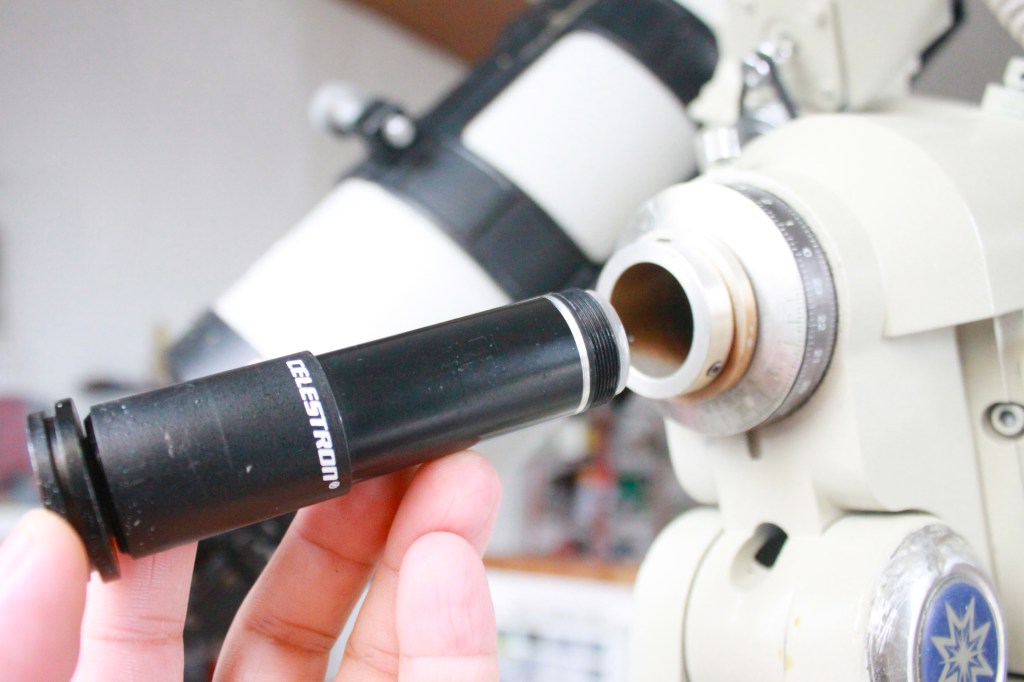I have recently acquired a Meade LXD75 mount without a polar scope. I noticed that a small finder scope could fit in the polar scope slot, thus, serve as an improvised polar scope.

DIY polar scope using a repurposed finder scope
I looked for a small finder scope and it so happened that an 8 x 20 Celestron finder fits the slot. I have made some modification in the finder scope’s barrel to make sure it clears the polar scope slot. Notice that the finder scope’s barrel has been modified, with a smaller barrel diameter towards the objective lens, otherwise it would not fit all the way through and protrude too much.

A repurposed 8 x 20 Celestron finder scope used as a polar scope
I tested the improvised polar scope on a clear night to see if I would be able to spot Polaris and roughly polar-align the telescope. While it lacks a star map overlay, a usual feature in a standard polar scope, it has a cross hair for tracking the position of Polaris relative to the position of the mount’s RA axis. An app such as the Stargate PA can be used to determine Polaris’s position relative to the cross hair, for more precise alignment.

Polaris as seen through a DIY polar scope. To see an overlay showing the north celestial pole, click here.
A polar scope can only help in rough polar alignment, perhaps good enough for visual astronomy. For astrophotography, a more accurate polar alignment method is needed such as the drift alignment method. In drift alignment method, when the telescope is pointed and tracking a star in the east, minimize the north-south drift in the eyepiece by adjusting the polar axis higher or lower (altitude adjustment). When the telescope is pointed and tracking a star in the celestial equator (near meridian), minimize the north-south drift by adjusting the polar axis to the left or to the right (azimuth adjustment).
I have also installed a Kenko polar scope to a Vixen Great Polaris (GP) mount. I modified the polar scope’s coupler to fit the Vixen GP mount. Instead of the standard threaded coupling, I used three screws to attach the polar scope onto the mount. A separate set of centering screws allow alignment of the star map overlay with that of the actual stars in the sky.

Kenko polar scope attached to a Vixen Great Polaris (GP) mount
A polar scope is helpful in aligning the mount’s polar axis with that of the Earth’s axis of rotation, but it lacks the precision required for astrophotography. When imaging at longer focal lengths, I recommend not relying on a polar scope, but instead use the declination drift alignment method for polar alignment. It looks at two stars, one in the eastern or western horizon, and another in the meridian near the celestial equator, allowing for better polar alignment even without the view of Polaris.

Star chart from a 1990 polar scope still works!
Night Sky in Focus © Anthony Urbano | Bacoor, Philippines